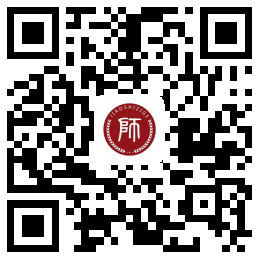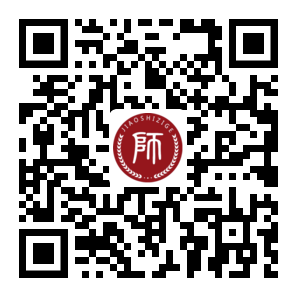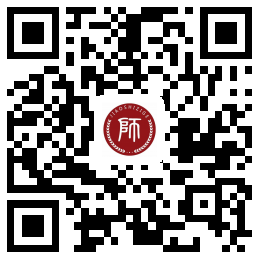上海中学教师全国教师资格统考《英语学科知识与能力(初中)》模拟试卷二
- 时间:
- 2018-10-25 11:47:38
- 作者:
- 邹老师
- 阅读:
- 来源:
- 上海教师资格证




在每小题列出的四个备选项中选择一个最佳答案,错选、多选或未选均无分。
1. The visitors here are greatly impressed by the fact that _____ people from all walks of life are working hard for _____ new Ma’anshan.
A.\; a B. \;the C. the; a D. the; the
2. _____, a small advertisement held my attention, which read “Easy job. Good wages. No experience necessary.”
A. Looking through the newspaper B. While I was looking through the newspaper
C. To look through the newspaper D. I was looking through the newspaper
3. Hard work, however, does not necessarily _____ much achievement or honor which is expected by someone.
A. stand up for B. come up with C. go after D. result in
4. _____ the aid from the government, the earthquake-stricken area _____ greater loss.
A. Apart from; should have suffered B. But for; would have suffered
C. Thanks to; could suffer D. Except for; would have suffered
5. I doubt if it is _____ for you to read that book again.
A. worth B. worthy C. worthwhile D. valuable
6. To distinguish sounds, students are encouraged to practice ____.
A. minimal pairs B. nasal explosion
C. consonant clusters D. incomplete explosion
7. Language is said to be arbitrary because there is no logical connection between _____ and meanings.
A. sense B. sounds C. objects D. ideas
8. If two sounds are in complementary distribution, they are _____ of the same phoneme.
A. allophones B. symbols C. phones D. signs
9. Which of the following sentences is a two-place predicate?
A. It is snowing. B. The baby is sleeping.
C. John gave Mary a book. D. Jack loves Mary.
10. The structural view limits knowing a language to knowing its structural rules and vocabulary. The communicative or notional-functional view adds the need to know how to _____ the rules and vocabulary to do whatever it is one wants to do.
A. use B. analyze C. learn D. remember
11. If a teacher asks “What does corrective feedback mean”, this type of question is called “_____”.
A. referential question B. tag question
C. rhetorical question D. display question
12. A variety of games, role-plays, situations, etc. are _____ communicative activities prepared to support the Communicative Language Teaching.
A. text-based B. task-based C. game-based D. situation-based
13. What is the purpose of using information gap activity?
A. To prepare students for oral presentation.
B. To provide students with an enjoyable activity based on effective communicative approaches.
C. To ask students to listen and write.
D. To make enough input.
14. In _____, substitutional and transformational drills are frequently used and aimed at form accuracy.
A. cognitive processing B. communicative practice
C. meaning practice D. mechanical practice
15. In a conversation about how to spend a holiday, a student says, “I have plan to go traveling with my family.” Which of the teacher’s feedback will keep up communication as well as help the student correct his syntax error?
A. You should say you have planed to go traveling with your family.
B. Why not say you planned to go traveling with your family?
C. You say you haveplan to go traveling?
D. You should pay attention to the tense of the sentence.
16. Which of the following does a teacher want his / her students to develop if he / she guides them to take notes key words, abbreviations and symbols?
A. Cultural awareness. B. Language awareness.
C. Learning strategies. D. Language knowledge.
17. According to The National English Curriculum Standards, the language knowledge students are required to learn consists of phonetics, vocabulary, grammar, _____.
A. function and theme B. culture and society
C. literature and linguistics D. discourse and genre
18. Which of the following should a teacher avoid when using an ELT course book?
A. Selecting appropriate supporting materials and resources.
B. Interpreting curriculum goals and its expectations for the course.
C. Planning lessons in relation to specific goals, topics, texts, and tasks.
D. Implementing everything in the book without considering students’ needs and levels.
19. Total Physical Response as a TEFL method is more often used for teaching ____.
A. children B. adults C. ESP course D. GE course
20.Which of the following is an example of teachers’ indirect corrective feedback?
A. say “went” instead of “go”
B. we never use “at” that way
C. choice A is not the right answer
D. who can help him with this sentence?
请阅读Passage 1,完成21~25小题。
Passage 1
There’s always a lot to do to get the kids ready to go back to school, let alone trying to get them excited about the idea. To help your kids get ready, save a few dollars in the process and have some fun with them in the dying days of summer, try a few of these fun filled activities.
*********************************************************************************
UP-CYCLING
Every student needs school supplies. But a lot of what they need is already littering around your house. If you don’t have reusable school supplies at home, you might have the materials to make them.
Try up-cycling with your kids and change old or useless products new ones.
Here are a few ideas to get you started:
●Sew blue jeans pencil cases.
●Turn shoeboxes arts storage boxes.
●Use an old belt as a books belt.
●Wrap book covers in old posters.
Up-cycling is a great way to develop artistic talent and creative thinking in your children.
*********************************************************************************
PLAN TO PACK AHEAD
Most teachers and schools reward green behavior among students. To help your kids stay green, be sure to have these items on hand so you can pack them litter-less lunches.
Here’s what you need:
●Reusable lunch containers.
●A firm lunchbox and thermos(水瓶).
●Reusable napkins(餐巾).
*********************************************************************************
MAP IT OUT
Across the country, kids are thinking about how they’ll get to school. Do I walk? Do I bike? Either way, avoid driving them if at all possible.
Kids need to stay active and want to connect with other local kids on the way to school. Help your children map out their route or get them involved with a local walking school bus. A walking school bus is groups of children walking to school with one or more adults.
*********************************************************************************
We hope these activities will help you and your kids get ready for the new school year, and that you’ll have some fun in the process. Last but not least, some activities may require encouragements … may we suggest some organic chocolate ice cream.
21. What do the suggested activities have in common?
A. Having fun and saving green.
B. Saving money and obeying school rules.
C. Offering food and training skills.
D. Bringing teachers together and saving money.
22. The activities of UP-CYCLING bring benefits of ____.
a. making old products creative school supplies
b. making friends with local kids on the way to school
c. bringing fun of cooperation between parents and kids
d. packing litter-less lunches to school
e. developing kids’ artistic talent and creative thinking
A. a, c, d B. b, c, d C. b, d, e D. a, c, e
23. Which of the following is TRUE about the MAP IT OUT activity?
A. Parents are forbidden to be involved in the activity.
B. Children can learn to read a map and take a correct school bus.
C. Parents are expected to drive their kids to school if possible.
D. Children walk to school together accompanied by one or more adults.
24. What’s the meaning of the underlined words in paragraph three?
A. The behavior to make the children to be green.
B. The behavior to make the children to learn to protect the envirment.
C. The behavior to make the children to learn saving.
D. All of the above are right.
25. The passage is most probably intended for ____.
A. teachers B. parents C. children D. headmasters
请阅读Passage 2,完成26~30小题。
Passage 2
Mom was right! If you say thank you, for even the smallest gift or slightest show of kindness, you’ll feel happy.
Gratitude, says Robert A. Emmons, a professor of psychology at the University of California, is an important element of happiness. In his recent book, Thanks! Emmons uses the first major study on gratitude to prove mom’s point.
As one of the leading scholars of the positive psychology movement, he admits gratitude may be difficult to express. He advises you to begin by admitting that life is good and full of events and elements that make daily existence a wonder. Second, recognize that the source of life’s goodness is more than just you. That source may be your mom, a friend, partner, child, colleague at work or play.
Gratitude is always other-directed, notes Emmons. You can be pleased or angry with yourself and feel guilty about doing something wrong, but you can never be grateful to or for yourself.
Expressing gratitude shouldn’t be a reaction; it should be a state of mind. To feel grateful when life is a breeze and you have more than you need is easy. To feel grateful in time of crisis—anger, hatred and bitterness—is easier. Also, too many people are aware of life’s blessings only after these are lost.
It’s crisis and chaos—danger, disease, disability and death—that bring many individuals to realize just how dependent they are on others. Yet it’s the way each of us begins life and ends it. It’s too bad that so many people waste those decades in between laboring under the illusion(幻觉) they are self-sufficient, says Emmons.
The abundance of voices expressing gratitude from his studies of individuals with chronic health problems is many. But Emmons goes beyond his “groundbreaking” science to make his case for gratitude by including the inspirational writings of philosophers, novelists and saints, as well as the beliefs of various religious and their respective scripture(经文). Take together, these observations are summed up quite nicely by famous humanist Albert Schweitzer, who said the secret of life is “giving thanks for everything”.
To enable and embrace gratitude, Emmons encourages the readers of Thanks!to keep a gratitude diary. He even provides easy-to-follow directions on how to practise and develop gratitude.
I’m not a reader or advocate of self-help books, but I am thankful for the reference I found in a newspaper article to the research Emmons was conducting on gratitude involving organ donors and recipients. The chance discovery led me to this book.
Mom implied that kindness seems to find its way back to the giver because life really is all about giving, receiving and repaying. So I’ll pay attention to her professional advice and say: Thank you, professor Emmons.
26. What is the text mainly discussed?
A. There are many ways of being thankful.
B. Gratitude is important to happiness.
C. Mom is great for her being thankful.
D. Being thankful will keep you fit.
27. The author mentions Robert A. Emmons’ book Thanks! in order to prove that _____.
A. Professor Emmons supports mom’s study on psychology.
B. mom is as great a psychologist as Professor Emmons.
C. Professor Emmons is a famous psychologist.
D. mom is right about her viewpoint on gratitude.
28. It will be easier for you to feel grateful when______.
A. you live a comfortable life
B. you receive gifts on your birthday
C. you get help during your hard times
D. you are congratulated on your success
29. What is the opinion of Professor Emmons?
A. It is enough to thank others orally
B. Whether you are thankful is always up to you
C. Remember to be thankful anytime and anywhere
D. It is easier to be thankful for yourself than for others.
30. In the writer’s opinion, Emmon’s book Thanks! On gratitude is _____.
A. one-side B. reasonable C. puzzling D. helpful
二、简答题(本题共1小题,20分)
听说课的教学步骤一般分为哪三部分?(6分)请简述它们各自的目的是什么?(14分)
三、教学情境分析题(本大题1小题,30分)
根据题目要求,完成下列任务,用中文作答。
材料:
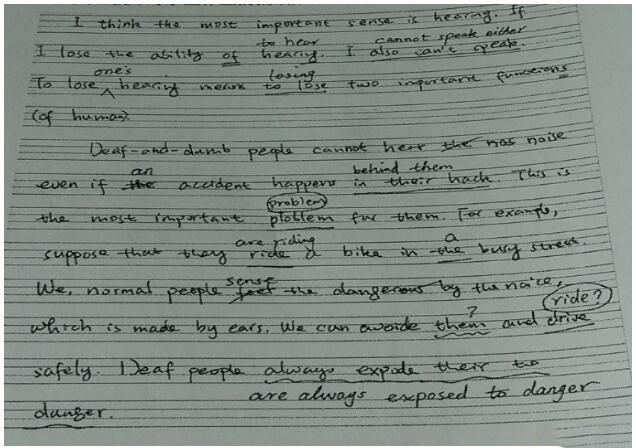
上面是某英语教师对学生作业的批改案例,请用中文从以下方面进行评析。
1.作业批改存在的问题(10分)
2.该批改方式可能导致的负面结果(10分)
3.针对存在的问题提出相应的改进建议(10分)
四、教学设计题(本大题1小题,40分)
根据提供的信息和语言素材设计教学方案,用英文作答。
设计任务:请阅读下面学生信息和语言素材,设计一节20分钟的英语听说课的教案。教案没有固定格式,但须包含下列要点:
● Teaching objectives
● Key and difficult points
● Major steps and time allocation
● Activities and justifications
教学时间:20分钟
教学材料:
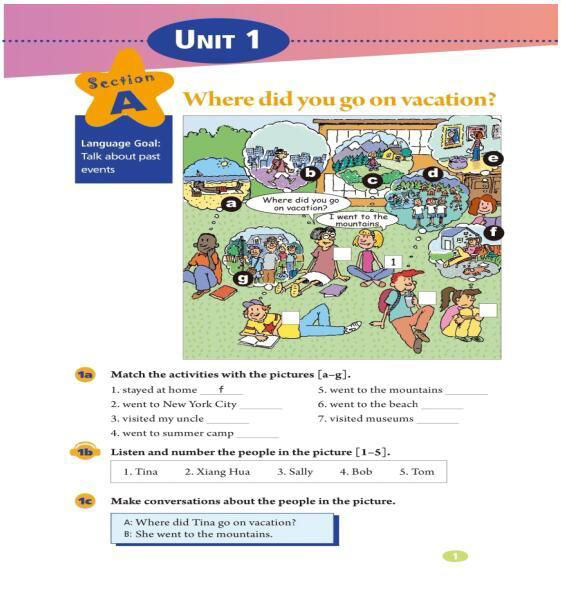
一、单项选择题
1-5 ABDBC 6-10 ABADA 11-15 DBBDC 16-20 CADAD
21-25 ADDBB 26-30 BDCCD
二、简答题
【参考答案】
听说课的教学步骤一般分为听前、听中和听后。
听前:预测听力材料的主要内容。通过头脑风暴等方式,为学生扫清词语和句型障碍。并对听力材料的背景进行简要的提示,使学生能够对听力材料的主要内容进行系统的把握。最后提出需要解决的问题,让学生带着问题去听材料。
听中:在听的过程中,主要分为泛听和精听两部分。在泛听部分,学生通过对听力材料大意的把握,明确材料主旨,能够写出材料的标题、概要以及图与文字进行匹配;在精听部分,主要是详细听材料的细节,通过细节的把握,完成材料内容的补充。
听后:听后是对听前问题的回答。比如:回答问题、判断正误、关键词等。
三、教学情境分析题
【参考答案】
1.该教师的作业批改存在的问题有:
①批改面面俱到。该教师采用了“包办”法,标出学生作文中每个错误,甚至帮学生一一改正这些错误;
②批改字迹有些潦草,个别符号意思不明确,不是很明白易懂;
③在批改过程中,该教师一味地指出错误,没有把好的词句划出来,不能及时鼓励学生的优点。
2.该批改方式可能会导致的负面结果有:
①教师一一帮助学生改正错误,等于老师重新帮他写了一篇作文,这样势必造成批阅时间过长,影响其他环节的工作,而且也会阻滞学生英语写作能力的提高;
②该教师重作文批改、轻讲评的方式,会导致对学生作文的轻率处理,没有达到写作的效果;
③该教师一味地指出错误,可能会打消学生的学习积极性,丧失学习兴趣,过多指出错误会直接影响到学生的情绪,伤害学生的自尊心,减低学习效果。
3.英语老师要根据课程标准和教材的要求以及学生的认知水平,布置精选精练的作业,在批改作业时应注意:
①不宜只指出错误而不给予纠正。教师批改作文指出错误后,要重视纠错,有些错误可以根据学生个人学习能力由他们自行纠正,有些超句子水平的错误是学生无法自己改正的,教师应给予修正;
②不宜千篇一律地批改作文。不同水平的学习者对纠正错误的期望和要求存在着差异,这一事实要求教师不仅应当注意这些要求,而且要灵活地处理不同的要求。
③不宜主次不分地批改作文。批改作文时不宜抓小失大,主次不分。如果只注意作文中的枝节(如拼写)而忽视全局性的问题,这样的批改是片面的,要重视“全局性问题”,主要是文章的内容、文章的结构、文章的材料、文章的语言等。
④教师可以采用评语的方式对作业进行批改,但评语所使用的语言应与学生的语言水平相当。教师可以用学生已学的单词、短语、句型、时态、语态、语气或篇章结构,也可以用即将接触的语言。
四、教学设计题
【参考设计】
Teaching Aims
(1)Students can understand the usage of simple past tense.
(2)Students can master some new sentences: where did you go on vacation? I went to….
(3)Students can use the simple past tense to describe things happened in the past;
(4) Students can improve their listening and speaking abilities;
(5)Students can use English to talk about the thing they did during their vacation.
(6)Can improve the confidence of learning English, and not afraid of speaking English in class;
(7)Can cooperate with others actively, and complete the tasks together.
Teaching Key and Difficult Points
(1) The usage of simple past tense;
(2) Students can use the new sentences to communicate with others fluently.
(3) Students can get the main idea of listening material, and get the useful information from material.
Teaching Procedures:
Step 1 Lead-in (2’)
I will show some pictures about my vacation on the PPT, which including some beautiful scenery and some people photos. Then I will told students I had a great time during my holiday. For example:
I enjoyed my vacation in Hainan, I had a great time there, and I love there very much.
Then I told students today we are going to learn a new unit, its topic is about our vacation.
(Justification: Students interest could be aroused, and let them know what they are going to learn in this class.)
Step 2 Pre- listening (2’)
(1) I will write some words on the blackboard to let student understand we should use past tense to express the things happened in the past.
Stay---stayed go---went visit---visited
(2) Ask students to look at the picture and guess what the people did in the different scenes.
And match the activities with the pictures.
(Justification: Get students prepared for the listening material.)
Step 3 While- listening(11’)
(1) Play the record, and ask students to finish the task in 1b, and let students know the name of each character.
(2)Play the tape again, and ask students to read after the tape, and pay more attention to the pronunciation, and do the imitation.
(3) Work in pairs and make sentences according to the 7 different scenes, and then tell your sentences to your partner. For example:
Tina went to the mountains during her vacation.
(Justification: After several time of listening, students can understand the listening material.)
Step 4 Post-listening (5’)
Make a conversation about what the people did during their vacations. Ask students to refer to the following conversation:
A: Where did Tina go on vacation?
B: she went to the mountains during her vacation. Where did Xiao Hua go on vacation?
A: Well, Xiao Hua went to New York City.
…
B: Then, where did you go on vacation?
A: Me? I visited my grandma in Shanghai.
B: Did you have a good time?
A: Yes, everything was excellent.
B: Sound good, I went to fishing during my vacation.
After finished, I will ask some groups to share their ideas.
(Justification: Through cooperation, students can consolidate what they have learned in this class and practice their speaking ability as well.)








